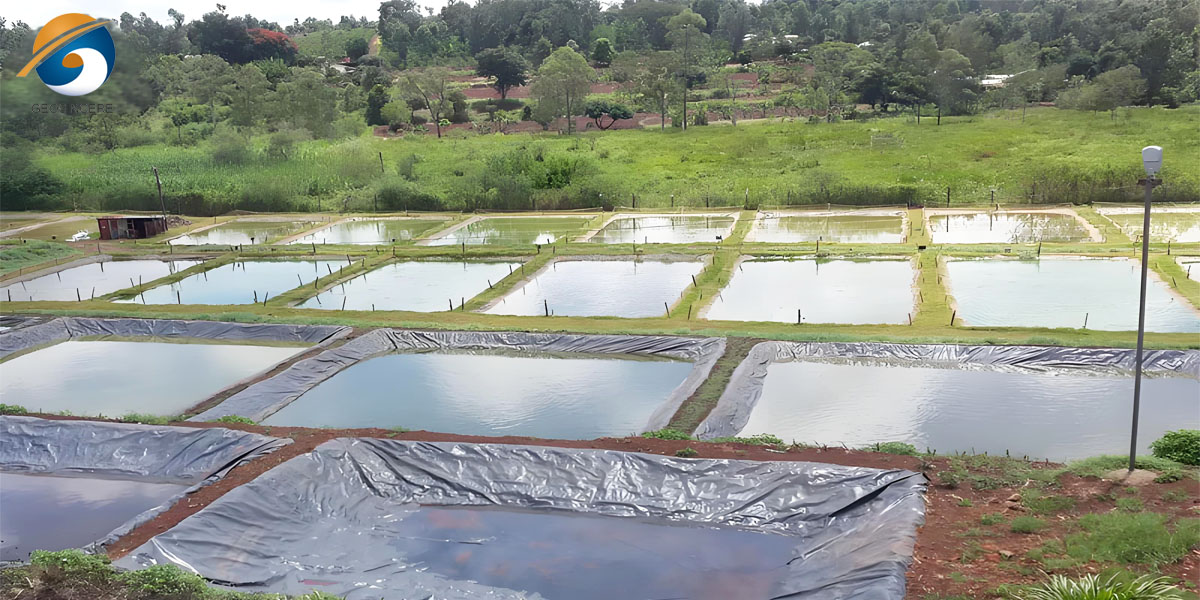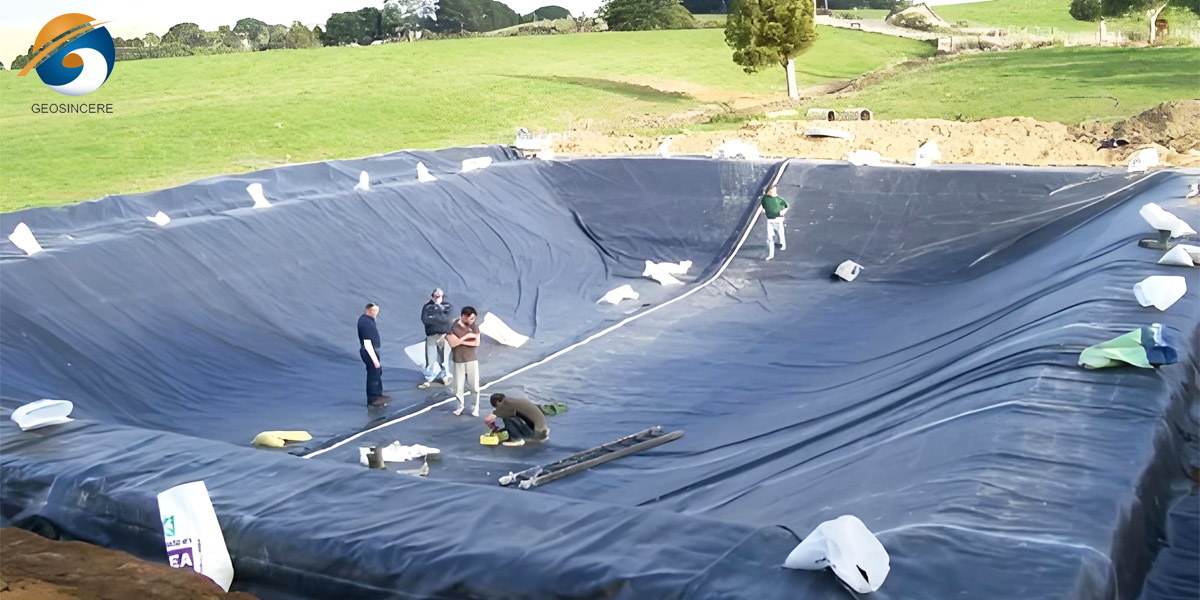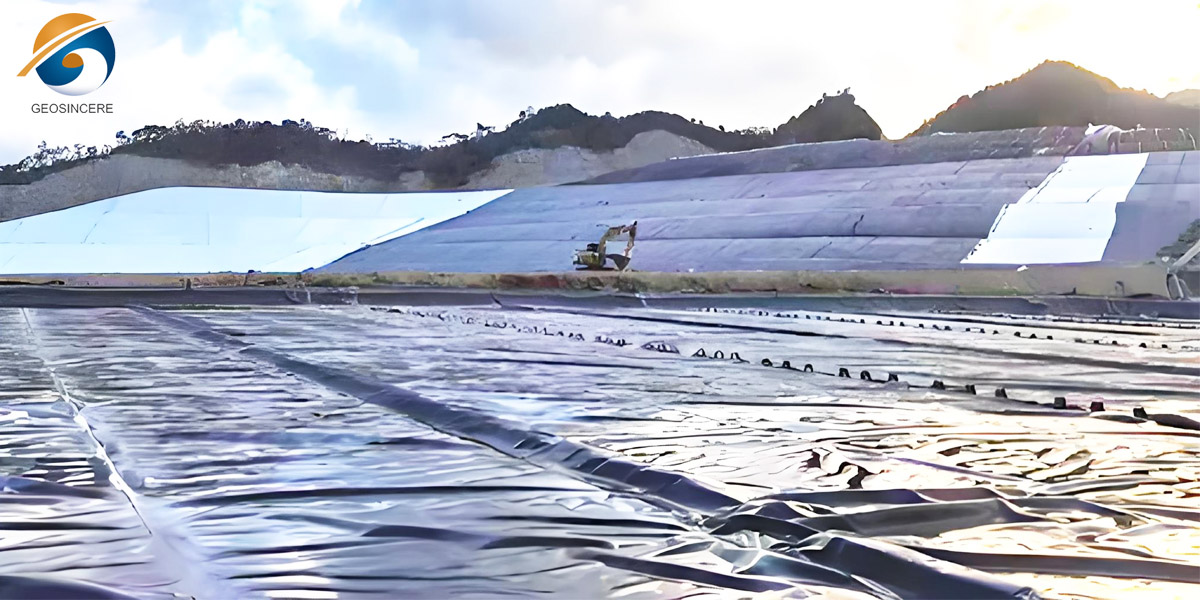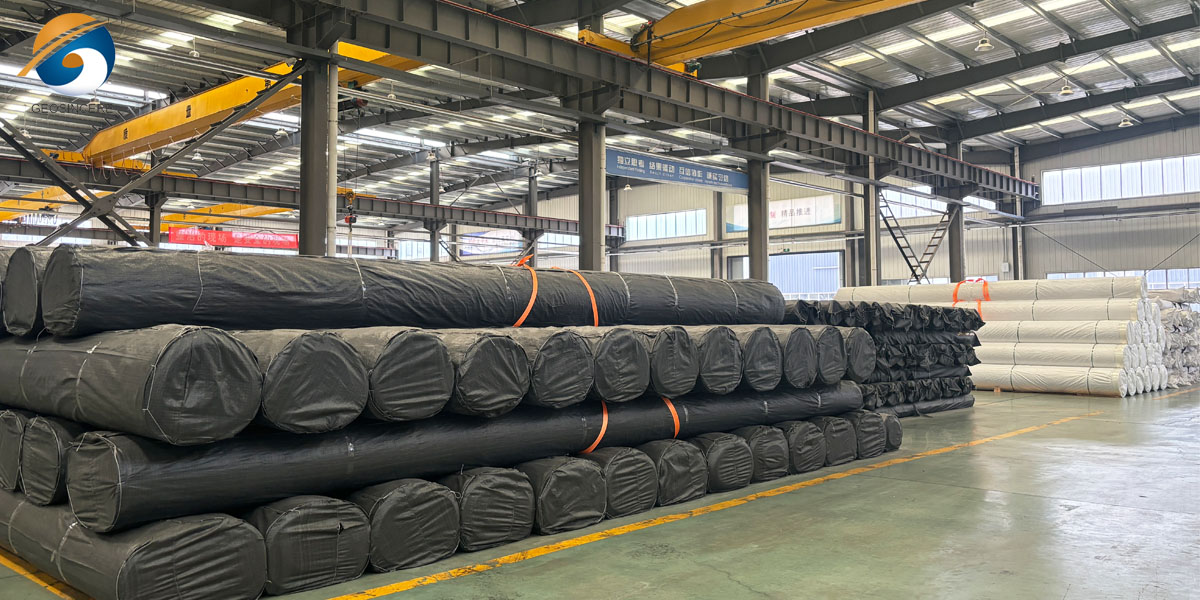Ultimate Guide to Choosing Impermeable Geomembrane
In the geographical regions of civil engineering, environmental protection, and water useful resource management, the unsung hero is regularly a thin, artificial sheet regarded as an impermeable geomembrane. This engineered cloth serves as a necessary barrier, stopping the migration of beverages or gases in a sizeable array of applications, from securing landfill waste to retaining treasured water in reservoirs. However, the time period "geomembrane" is now not a one-size-fits-all solution. Selecting the incorrect kind can lead to catastrophic failures, environmental contamination, and enormous monetary losses.
This remaining information is designed to demystify the system of selecting the proper impermeable geomembrane liner. We will delve into the fundamental factors, fabric types, and key issues that engineers, challenge managers, and environmental professionals should consider to make sure long-term venture success and integrity.
1. Understanding the Basics: What is a Impermeable Geomembrane?
An impermeable geomembrane is a very low permeability artificial membrane liner or barrier used to manage fluid migration in a man-made project, structure, or system. Typically manufactured from polymeric materials, they are delivered to the website online in rolls and are welded collectively to structure a continuous, impermeable layer. Their most important characteristic is containment and isolation, developing a dependable protect between contaminated substances and the surrounding surroundings or between a precious useful resource (like water) and the underlying soil.
2. Critical Factors Influencing Your Impermeable Geomembrane Choice
Choosing the proper geomembrane is a multi-faceted decision. The following elements are paramount in the choice process.
2.1 Chemical Resistance and Fluid Compatibility
This is arguably the most fundamental factor. The hdpe impermeable liner have to be chemically well matched with the substance it will contain.
- Landfill Liners: Must face up to a aggressive leachate, which is a complicated cocktail of natural and inorganic chemicals, heavy metals, and unstable compounds.
- Potable Water Liners: Must be inert and now not leach any unsafe components into the water. High-Density Polyethylene (HDPE) is regularly the favored choice.
- Mining Leach Pads: Exposed to intense pH levels, from exceptionally acidic (in coal mining) to enormously alkaline (in gold mining). The cloth should stand up to prolonged publicity except degrading.
- Wastewater Lagoons: Must face up to organic agents, sewage, and a number remedy chemicals.
Always request chemical resistance charts from producers and reflect onconsideration on long-term immersion assessments for quintessential applications.
2.2 Physical and Mechanical Properties
The bodily needs on the impermeable liner dictate the required mechanical strength.
- Puncture Resistance: Crucial in functions with sharp aggregates, uneven subgrades, or root penetration. Materials like LLDPE and PVC commonly provide most appropriate puncture resistance in contrast to HDPE of the identical thickness.
- Tensile Strength and Elongation: Measures the material's capacity to face up to stress and strain. HDPE has excessive tensile electricity however low elongation, which means it is sturdy however can be brittle. Conversely, PVC and LLDPE are extra bendy and can elongate substantially earlier than failure, making them appropriate for areas susceptible to settling or movement.
- Tear Resistance: The resistance to the propagation of a tear as soon as it is initiated. This is integral throughout and after installation.
2.3 Environmental Stress Crack Resistance (ESCR)
This is a precise and vital property for polyethylenes (HDPE, LLDPE). ESCR measures a material's capability to withstand cracking below tensile stress in the presence of a chemical agent (like a surfactant). Low ESCR used to be a frequent purpose of early geo membranes failures. Modern resin formulations have notably accelerated ESCR, however it stays a key specification, specially for HDPE.
2.4 UV Resistance
When uncovered to sunlight, some polymers can degrade, dropping their mechanical houses and turning into brittle. For functions the place the geomembrane is uncovered for prolonged durations (e.g., canal liners, brief covers), UV stabilization is essential. HDPE liner normally requires carbon black for UV protection, whilst different polymers like fPP and PVC have inherent or brought stabilizers.
2.5 Permeability
While all geomembrane liner is "impermeable" in a sensible sense, they do have a very low permeability coefficient. The major mechanism is diffusion. For containing risky natural compounds (VOCs) or hazardous gases, a geomembrane with an extraordinarily low diffusion fee is necessary. HDPE is frequently liked for its great barrier houses in opposition to a extensive vary of gases and vapors.
3. A Deep Dive into Common Impermeable Geomembrane Materials
Each polymer household presents a special set of properties, making it appropriate for precise applications.
3.1 High-Density Polyethylene (HDPE) Impermeable Geomembrane
- Pros: Excellent chemical resistance, excessive tensile strength, very low permeability, and cost-effectiveness. It is the most extensively used geomembrane sheet in the world for functions like landfills, mining, and reservoir liners.
- Cons: Relatively stiff, which can make set up on complicated slopes challenging. Lower puncture resistance and terrible ESCR in lower-quality formulations. Prone to stress cracking if now not correct manufactured and installed.
- Best For: Basal hdpe membrane liner for landfills, tailings impoundments, potable water containment, and evaporation ponds.
3.2 Linear Low-Density Polyethylene (LLDPE) Impermeable Geomembrane
- Pros: More bendy than HDPE, with remarkable puncture and tear resistance. It has appropriate chemical resistance and a greater ESCR. Its flexibility lets in for less difficult conformance to irregular subgrades.
- Cons: Generally has decrease tensile electricity and greater permeability to gases than HDPE.
- Best For: Landfill caps, purposes with uneven subgrades, secondary containment, and aquaculture.
3.3 Polyvinyl Chloride (PVC) Impermeable Geomembrane
- Pros: Extremely flexible, convenient to weld (using warm air), and has desirable puncture resistance. It is frequently supplied with reinforcing scrim for delivered dimensional stability.
- Cons: Susceptible to plasticizer loss over time, which can lead to embrittlement. Its chemical resistance is no longer as large as polyethylenes, specifically to hydrocarbons and some solvents.
- Best For: Canal linings, transient covers, ornamental ponds, and non-critical wastewater applications.
3.4 Flexible Polypropylene (fPP) Impermeable Geomembrane
- Pros: Outstanding chemical resistance, specifically to a broad vary of natural and inorganic chemicals. Excellent UV resistance except carbon black, excessive flexibility, and very excessive ESCR.
- Cons: Generally extra costly than HDPE or LLDPE. Can be greater difficult to weld, requiring specialised equipment.
- Best For: Exposed functions in harsh chemical environments, such as industrial tank liners, brine containment, and floating covers.
3.5 Ethylene Propylene Diene Monomer (EPDM) Impermeable Geomembrane
- Pros: A artificial rubber regarded for its intense flexibility, cold-temperature performance, and resistance to UV radiation.
- Cons: Poor resistance to oils and hydrocarbons. Seaming is generally finished with adhesives or tape, which can be much less dependable than fusion welding.
- Best For: Decorative ponds, irrigation canals, and roofing applications.
4. Impermeable Geomembrane Selection Workflow: From Project Concept to Installation
A systematic method ensures no integral element is overlooked.
Define the Application and Service Conditions: What are you containing? What is the diagram life? What are the anticipated temperature extremes? Is it uncovered or buried?
4.1 Analyze the Chemical Environment: Obtain a entire chemical profile of the contained fluid. Cross-reference this with producer chemical resistance data.
4.2 Assess the Site-Specific Physical Demands: Evaluate the subgrade conditions, manageable for settlement, and puncture threats. This will dictate the required thickness and mechanical properties.
4.3 Choose the Polymer Type: Based on steps 1-3, slim down the appropriate polymer households (e.g., HDPE for chemical resistance, LLDPE for flexibility).
4.4 Determine the Thickness (Gauge): Thickness (typically 0.75mm to 3.0mm) is chosen based totally on the required puncture resistance, tensile stresses, and building survivability. Thicker is no longer usually better, however it frequently gives a security factor.
4.5 Develop the Specification: Create a distinct venture specification outlining the required material, thickness, mechanical houses (e.g., tensile, tear, puncture), and seam electricity requirements.
4.6 Prioritize Quality Assurance/Quality Control (QA/QC): The fine cloth will fail if poorly installed. Ensure your challenge includes:
4.7 Factory Quality Control: Certificates of Analysis from the manufacturer.
4.8 Construction Quality Assurance (CQA): On-site inspection of the subgrade preparation, welding (using dual-track fusion or extrusion methods), and destructive/non-destructive trying out of seams.
Conclusion
Selecting an impermeable geomembrane is a foundational engineering selection that balances chemical compatibility, bodily demands, environmental factors, and budget. There is no popular "best" material—only the great fabric for your precise project.
While HDPE stays the workhorse for the most stressful containment applications, the flexibility of LLDPE, the chemical prowess of fPP, and the ease of set up of PVC all have their rightful place. By following a rigorous choice manner and insisting on the best possible requirements of manufacturing and set up QA/QC, you can be assured that your high density polyethylene geomembrane will operate its vital, impermeable feature reliably for many years to come. This cautious resolution is no longer simply a purchase; it is an funding in environmental safety, regulatory compliance, and the last success of your project.
Choose a dependable Impermeable Geomembrane dealer to quote rate for you :
Shandong Geosino New Material Co., Ltd. (GEOSINCERE Geosynthetics) has been preserving on investing in technological innovation, manufacturing amenities enchancment and turnkey engineering abilities. We have invested 10 million greenbacks into our manufacturing manufacturing facility which is outfitted with contemporary computerized manufacturing traces to manufacture excessive fantastic HDPE geomembranes and different geosynthetics with optimized processes. Our big strains of geosynthetics merchandise are properly recognized for their ensured quality, excessive performance, brilliant sturdiness and quality price effectiveness.
GEOSINCERE is constantly dedicated to geomembrane lookup and development, manufacturing and set up services. We can furnish clients with most sizeable strains of HDPE liners and geotextiles for initiatives as civil engeering, Gold mining, Copper Mining,Road Construction,Landfill, Agriculture and aquaculture engineering applications.
GEOSINCERE company HDPE geomembranes and different geosynthetics merchandise and options can meet your requirements via our strong technologies, modern engineering options and exquisite purchaser services. GEOSINCERE constantly tries our pleasant to resolve the most complicated civil, mining and environmental challenges with our progressive and excessive overall performance geosynthetic products. Quality assurance, manufacturing facility rate and quick transport time are our aggressive advantages.








